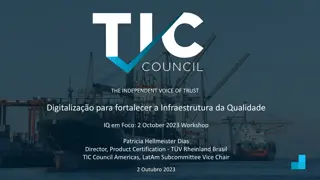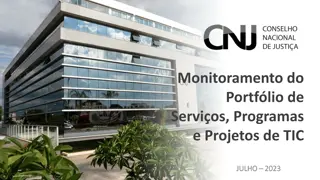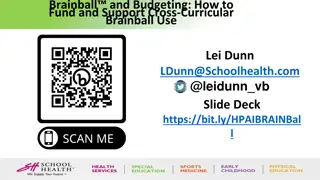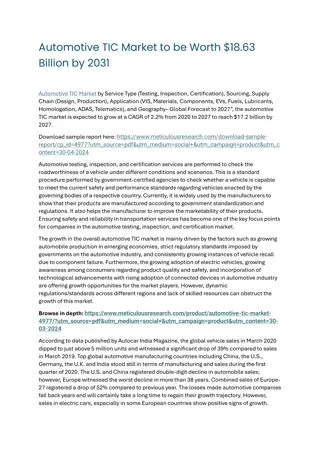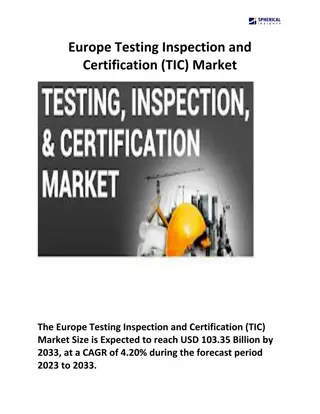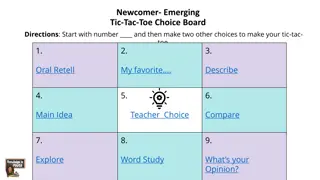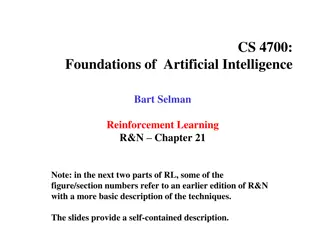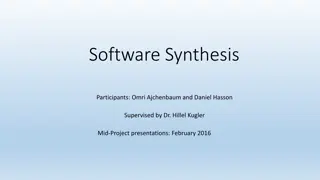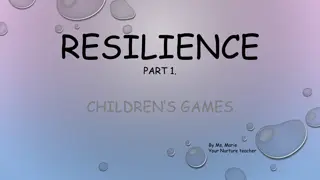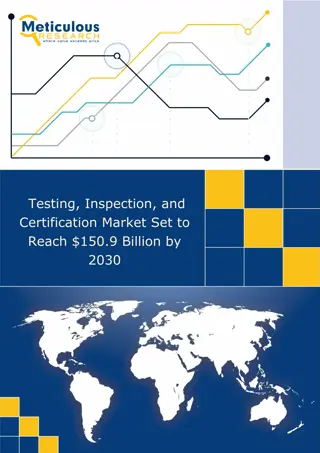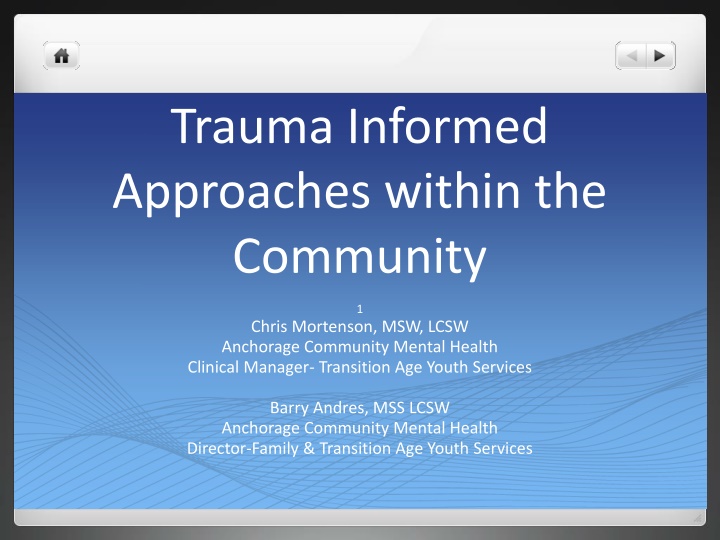
Trauma-Informed Approaches in the Community: Transition Age Youth Services
Learn about trauma-informed approaches within the community, focusing on Transition Age Youth Services provided by Anchorage Community Mental Health. Discover strategies to help youth who have experienced severe trauma, are in state custody, transitioning from residential care, or are homeless/runaway. Gain insights on calming techniques for children with trauma exposure and how to support their basic needs and safety.
Download Presentation

Please find below an Image/Link to download the presentation.
The content on the website is provided AS IS for your information and personal use only. It may not be sold, licensed, or shared on other websites without obtaining consent from the author. If you encounter any issues during the download, it is possible that the publisher has removed the file from their server.
You are allowed to download the files provided on this website for personal or commercial use, subject to the condition that they are used lawfully. All files are the property of their respective owners.
The content on the website is provided AS IS for your information and personal use only. It may not be sold, licensed, or shared on other websites without obtaining consent from the author.
E N D
Presentation Transcript
HomeButton.png Trauma Informed Approaches within the Community 1 Chris Mortenson, MSW, LCSW Anchorage Community Mental Health Clinical Manager- Transition Age Youth Services Barry Andres, MSS LCSW Anchorage Community Mental Health Director-Family & Transition Age Youth Services
HomeButton.png Transition Age Youth Services at Anchorage Community Mental Health Priority clients Youth who have experienced severe, complex and serial trauma. Youth in state custody through OCS or DJJ Youth transitioning back into the community from residential care Homeless and runaway youth
HomeButton.png Trauma trainings? 5 .? 4....? 3...? 2...? 1...?
HomeButton.png What s going on with that kid? So if you were taking care of a 4 year old who was having a tantrum and you knew they had a history of exposure to trauma, what things might you do to help calm them?
HomeButton.png You might Ask what they need?
HomeButton.png You might Help establish a sense of safety and provide reassurance. Your going to be OK
HomeButton.png You might Pick them up and give them a hug?
HomeButton.png You might Help meet basic needs Wonder if they are hungry or tired
HomeButton.png You might Start to consider what traumatic events in life may be contributing to the tantrum. How might that thought change what you do?
HomeButton.png That same child 10 years later? What is objectively different in the situation?
HomeButton.png That same child 10 years later? What would you do similarly? What would you do differently?
HomeButton.png Transition Age Youth 14 to 24 years old High Adverse Childhood Experiences (ACES) score In custody of OCS or DJJ With family of origin but with high risk behaviors Homeless, runaway or couch-surfing
HomeButton.png Extra challenges with our youth Comorbid struggles with trauma/ developmental disability/ traumatic brain injury/ borderline intellectual functioning Prone to victimization through peer domestic violence and sex trafficking etc. Aging out of the foster care and/ or juvenile justice system
HomeButton.png Treatment at ACMHS Trauma Focused Cognitive Behavioral Therapy (TFCBT) Eye Movement Desensitization and Reprocessing (EMDR) Parenting with Love and Limits (PLL)
HomeButton.png Treatment Philosophy and Frameworks at ACMHS Transition to Independence Process (TIP) Attachment self-Regulation and competency (ARC)
HomeButton.png Treatment Philosophy and Frameworks at ACMHS Caregiving systems are extremely important Assistant teachers, parents, teachers ,foster parents, probation officers, community providers, juvenile justice, providers, residential treatment providers, psychiatric providers, etc
HomeButton.png Treatment Philosophy and Frameworks at ACMHS Safety is extremely important Peritrauma (It s not a fruit)
HomeButton.png Treatment Philosophy and Frameworks at ACMHS Try to understand what is behind behaviors WBB
HomeButton.png Treatment Philosophy and Frameworks at ACMHS Attunement and Attachment
HomeButton.png Treatment Philosophy and Frameworks at ACMHS Meet basic needs
HomeButton.png Treatment Philosophy and Frameworks at ACMHS Caregiver Affect Management
HomeButton.png Treatment Philosophy and Frameworks at ACMHS Consistent caregiver response
HomeButton.png Treatment Philosophy and Frameworks at ACMHS Routines and rituals
HomeButton.png Core Components of Trauma-Informed Service Systems Trauma Awareness (staff training, consultation and supervision) Emphasis on Safety Opportunities to rebuild control and experience empowerment Self Care for providers Trauma-informed interventions and trauma-focused services
HomeButton.png Wrap-Up All behavior comes from an identified need that is not being met Identifying and engaging a caregiving system is invaluable Caregivers need to take care of themselves to take care of children
HomeButton.png Wrap-Up Consistency, routines and rituals Look for opportunities to rebuild control Caregivers need to take care of themselves to take care of children
HomeButton.png Trauma-Informed Treatment Resources The National Child Traumatic Stress Network (NCTSN) Eye Movement Desensitization and Reprocessing (EMDR) http://nctsn.org/ http://www.emdria.org/ http://nctsn.org/resources/topics/juvenile- justice-system http://www.emdrhap.org/content/ Trauma-Focused Cognitive Behavioral Therapy (TF-CBT) Attachment, Regulation and Competency (ARC) https://tfcbt.org/ http://www.traumacenter.org/research/asc ot.php Parenting with Love and Limits (PLL) https://gopll.com/ Transition to Independence Process (TIP) http://www.tipstars.org/
HomeButton.png ACMHS Transition Age Youth Programs Anchorage Community Mental Health Services (ACMHS) https://www.acmhs.com 561-0954 Alaska Youth Advocates (AYA) http://www.akyouthadvocates.org/ 929-2633 Seeds of Change (SOC) http://akseedsofchange.com/ 762-8660


